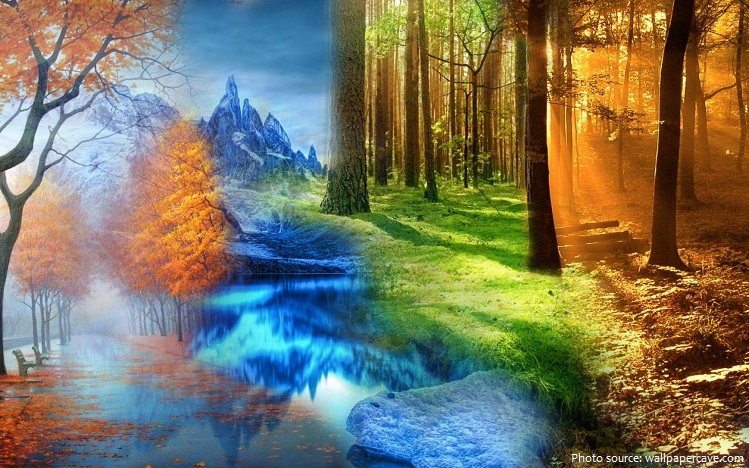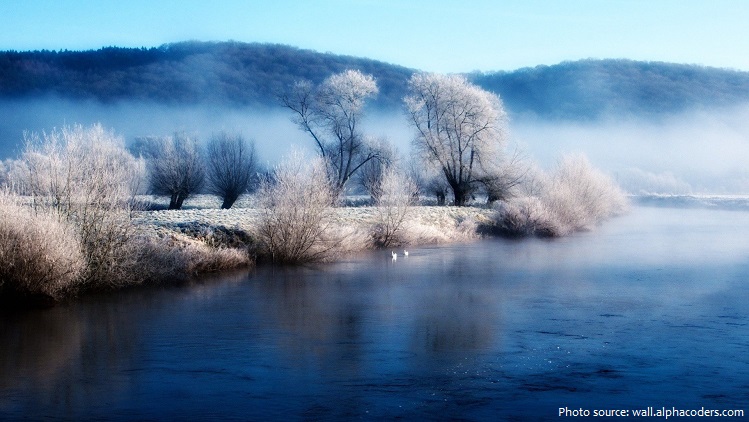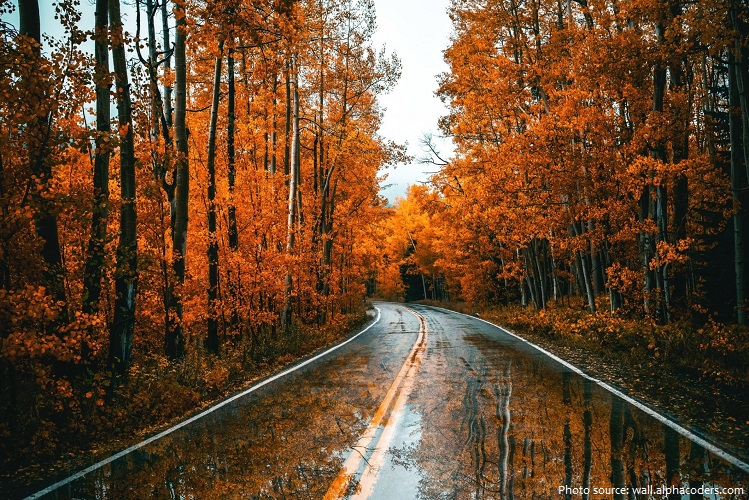
A season is any of four divisions of the year according to consistent annual changes in the weather.
Seasons occur because Earth is tilted on its axis relative to the orbital plane, the invisible, flat disc where most objects in the solar system orbit the sun. Earth’s axis is an invisible line that runs through its center, from pole to pole. Earth rotates around its axis.
The word “season” in this context comes from the Old French “seison”, meaning “sowing / planting”. This in turn came from the Latin “sationem” meaning “sowing”.

The seasons — winter, spring, summer, and autumn — are commonly regarded in the Northern Hemisphere as beginning respectively on the winter solstice, December 21 or 22 – on the vernal equinox, March 20 or 21 – on the summer solstice, June 21 or 22 – and on the autumnal equinox, September 22 or 23 (at the equinoxes, the days and nights are equal in length – at the winter solstice the day is the year’s shortest, and at the summer solstice it is the year’s longest).
In the Southern Hemisphere, summer and winter are reversed, as are spring and fall.
The four-season year is typical only in the mid-latitudes. The mid-latitudes are places that are neither near the poles nor near the Equator. The farther north you go, the bigger the differences in the seasons. Helsinki, Finland, sees 18.5 hours of daylight in the middle of June. In mid-December, however, it is light for less than 6 hours. Athens, Greece, in southern Europe, has a smaller variation. It has 14.5 hours of daylight in June and 9.5 hours in December.

The English word “winter” comes from the Proto-Indo-European word “wend,” which stands for water.
Winter temperatures in Oymyakon, Russia, average -50 °C (-58 °F). The remote village is generally considered the coldest inhabited area on Earth. Oymyakon is a two-day drive from Yakutsk, the regional capital which has the lowest winter temperatures of any city in the world.
The highest snowfall ever recorded in a one year period was 31.1 meters (1224 inches) in Mount Rainier, Washington State, United States, between February 19, 1971 and February 18, 1972.
Every winter, at least one septillion (that’s 1 followed by 24 zeros) snowflakes fall from the sky.
The first day of spring, the vernal equinox, has 12 hours of daylight and 12 hours of darkness. The term vernal is Latin for “spring” and equinox is Latin for “equal night“.
It is probably no coincidence that early Egyptians built the Great Sphinx so that it points directly toward the rising Sun on the day of the vernal equinox.

Before Spring was called Spring, it was called Lent in Old English. Starting in the 14th century, that time of year was called “springing time” — a reference to plants “springing” from the ground. In the 15th century this got shortened to “spring-time,” and then further shortened in the 16th century to just “spring.”
On the first day of spring, a person at the North Pole would see the sun skimming across the horizon, beginning six months of uninterrupted daylight. A person at the South Pole would see the sun skimming across the horizon, signaling the start of six months of darkness.
Summer came from the Old English name for that time of year, sumor. This, in turn, came from the Proto-Germanic sumur-, which itself came from the Proto-Indo-European root sam- (sam- seems to be a variant of the Proto-Indo-European sem-, meaning “together / one”).

Humans are scientifically proven to be happier in the summer.
In southern England, more than 35,000 people gather at Stonehenge to see the summer solstice. Druids and pagans are among those who celebrate the longest day of the year at this notable place.
Monarch butterflies spend the summer in North America before migrating south.
Autumn is derived from the French, which came from the Latin autumnus, the Roman name for this season.
While Americans typically use the word “fall,” the British use the word “autumn,” though both terms date around the 16th century. Before these terms, the period was called “harvest.”

One of the most stunning signs of Autumn is the turning of the leaves. Leaves change their wardrobes in response to chilly temperatures and less light (as days begin to shorten) – they stop producing chlorophyll, the green pigment that helps leaves capture sunlight to power photosynthesis. As green fades, the leave’s other pigments, such as the orange and yellow of carotenoids shine through. Vibrant red hues are the result of anthocyanins, pigments that are produced in the fall.
In addition to the brilliant colors of fall leaves, the autumn equinox signals another colorful spectacle — the aurora. According to NASA, autumn is “aurora season” because geomagnetic storms are about twice as frequent as the annual average during the fall.
No film with autumn in its title has won an Oscar. Spring, summer and winter have one each.